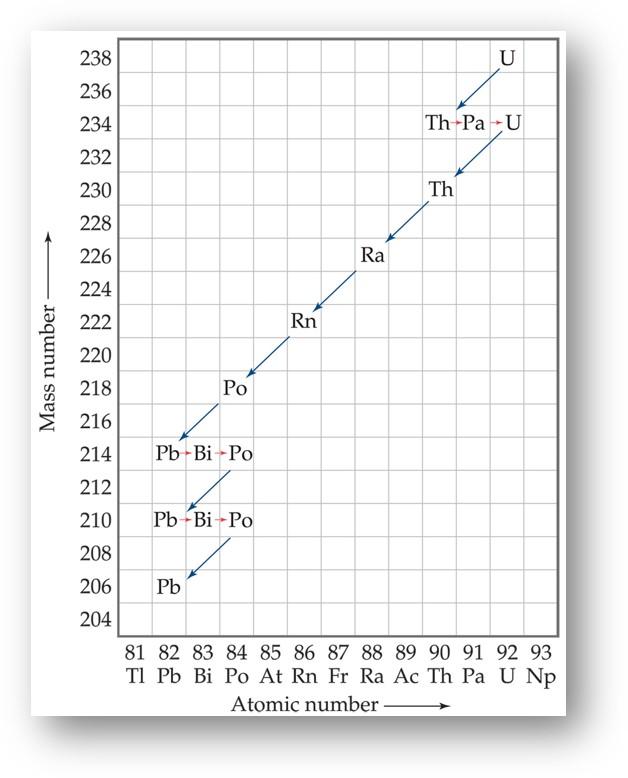Atomic Number Z = number of protons = number of electrons = 92. Therefore, The neutral atom of will have 92 electrons. (ii) The number of protons = Z = 92. The number of neutrons = A - Z = 235 - 92 = 143. Isotopes of an element have the same number of protons but different number of neutrons since their mass numbers are different. Isotope: Mass: Abundance: Spin: Mag Moment: 234 U: 234.040946: 0.005%: 0: 235 U: 235.043924: 0.720%: 7/2-0.35: 238 U: 238.050784: 99.275%: 0.
Uranium (chemical symbol U) is a naturally occurring radioactive element. When refined, uranium is a silvery-white metal. Uranium has three primary naturally occurring : U-238, U-235 and U-234.
Uranium is weakly radioactive and contributes to low levels of natural in the environment. Uranium is used in nuclear power generation. Specifically, U-235 can be concentrated in a process called “enrichment,” making it 'fissile' and suitable for use in nuclear reactors or weapons.
| Type of Radiation Emitted: | |
|---|---|
(from radioactive decay products) | Uranium-238: 4.47 billion years Uranium-235: 700 million years Uranium-234: 244,000 years |
On this page:

Uranium in the Environment
Uranium is present naturally in virtually all soil, rock and water. Rocks break down to form soil. Soil can be moved by water and blown by wind, which moves uranium into streams, lakes and surface water. More than 99 percent of the uranium found in the environment is in the form of U-238. Uranium-234 is less than one percent of all forms of natural uranium, but is much more radioactive. It gives off almost half of the radioactivity from all forms of uranium found in the environment.
The U.S. mining industry can retrieve uranium in two ways. The first is to mine rock that contains uranium. The second is to use strong chemicals to dissolve uranium from underground rocks into ground water, and then pump the water to the surface. The waste from these processes is more radioactive than the natural rock because the natural radioactive material in the earth is now exposed and concentrated. This waste can contaminate water, soil and air if it is not disposed of properly. Uranium eventually decays to radium. Radium decays to release a radioactive gas called radon. Radon in underground uranium mines is a greater radiation hazard to miners than uranium. Without precautions (i.e. ventilation) radon can collect in the mine shafts where it is inhaled by miners. Learn more about uranium mines and mills.
Uranium Sources
Number Of Neutrons In Uranium
A person can be exposed to uranium by inhaling dust in air, or ingesting water and food. The general population is exposed to trace levels of uranium primarily through food and water. Learn about background radiation.
People who live near federal government facilities that made or tested nuclear weapons, or facilities that mine or process uranium ore or enrich uranium for reactor fuel, may have increased exposure to uranium. Uranium that is depleted (U-235) is used in industrial settings (i.e. counterweights).

School science labs may keep small quantities of uranium of varying enrichment levels to demonstrate radioactive properties. These sources have low levels of radioactivity and are not harmful to people when handled properly.
Ingestion of uranium is a hazard because of its chemical properties.
Uranium Protons Neutrons Electrons
Uranium and Health
Uranium decays by alpha particles. External exposure to uranium is therefore not as dangerous as exposure to other radioactive elements because the skin will block the alpha particles. Ingestion of high concentrations of uranium can cause health effects, such as cancer of the bone or liver. Inhaling large concentrations of uranium can cause lung cancer from the exposure to alpha particles.
